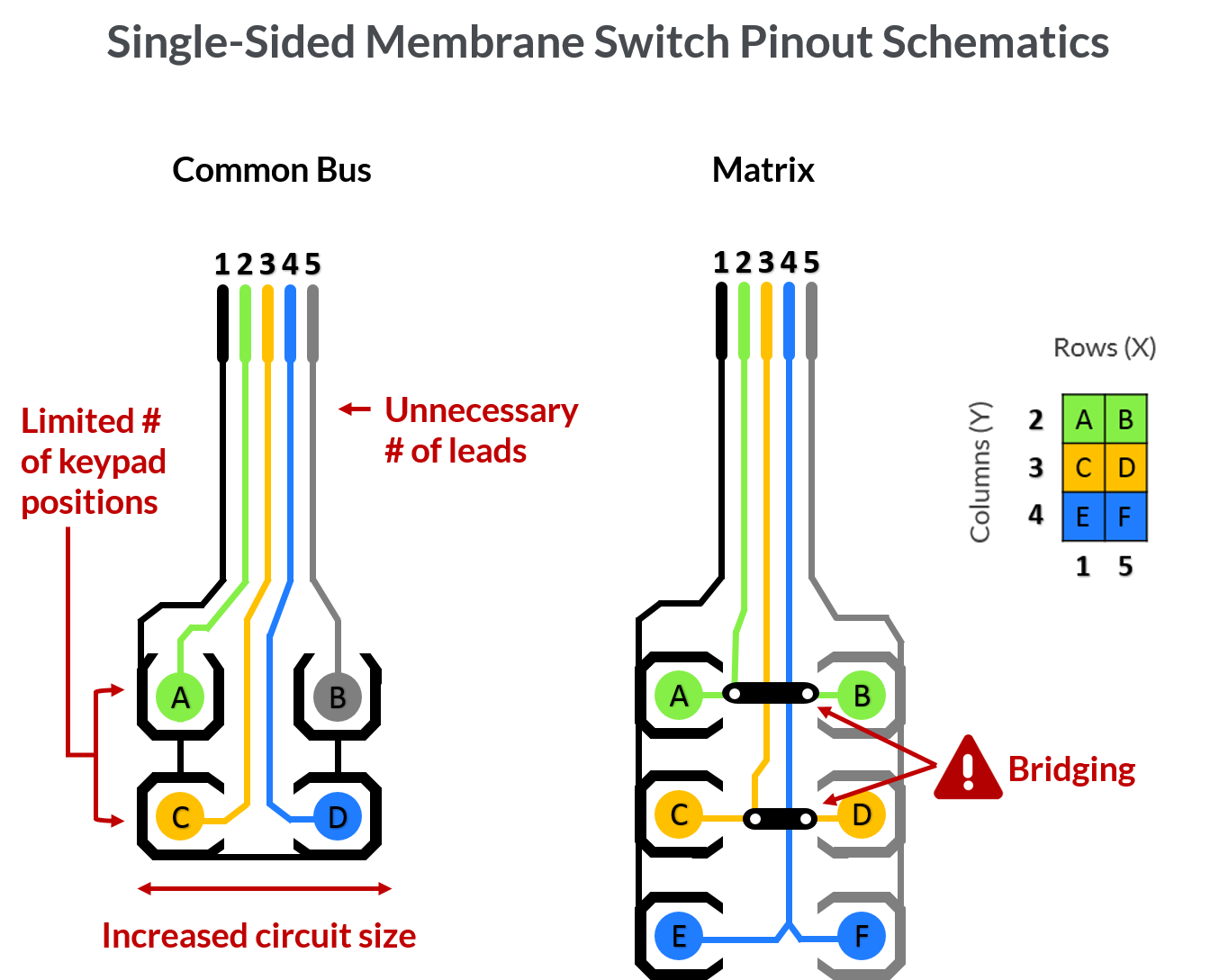Crucial Features to Seek When Choosing a Membrane Switch
Crucial Features to Seek When Choosing a Membrane Switch
Blog Article
Exactly How Membrane Switches Contribute to the Longevity of Electronic Control Panels
Membrane layer switches play an important role in improving the longevity of digital control panels, mostly through their multi-layered building which supplies efficient defense versus ecological aspects such as moisture and dust. The absence of relocating components substantially reduces the chance of mechanical failures, making membrane changes suitable for demanding applications.
Interpretation of Membrane Layer Switches

Membrane switches are made to be thin and light-weight, making them suitable for applications where space is restricted. They can be produced in various forms, sizes, and colors, supplying flexibility in layout that satisfies visual and useful requirements. Furthermore, membrane switches can include various innovations, such as tactile responses and LED indicators, improving customer experience.
Because of their construction, membrane layer switches are usually immune to dirt, dampness, and general wear, contributing to their resilience sought after environments. Their smooth design not only helps with very easy cleansing yet additionally reduces the danger of mechanical failure, making them a recommended option for makers looking for reliable user interfaces in their electronic control board.
Security Versus Ecological Elements
The design of membrane changes inherently gives a level of protection against different ecological variables, which is important for maintaining performance in challenging problems - Membrane Switch. These switches are normally created with layers of flexible materials that shield internal parts from wetness, dirt, and impurities. By enveloping the circuitry, membrane layer switches over decrease the danger of short circuits and corrosion, which can substantially harm efficiency
Moreover, using robust adhesives and sealants during production enhances their resistance to ecological difficulties. Membrane layer buttons can sustain exposure to chemicals and solvents, making them appropriate for markets such as food handling and healthcare, where hygiene and sanitation are vital. Their smooth surface area style also protects against the build-up of dirt and bacteria, promoting less complicated cleansing and upkeep.
Temperature level variations are one more environmental issue, and membrane buttons are engineered to operate efficiently across a variety of temperatures (Membrane Switch). This versatility makes certain that control panels stay functional in various setups, from industrial atmospheres to consumer electronic devices
Effect on User Interaction
Individual top article communication with digital control board is significantly affected by the style and capability of membrane buttons. These buttons supply a responsive user interface that enhances the general individual experience, enabling for user-friendly navigating and control. Their responsive nature guarantees that users receive immediate comments upon activation, which is critical for jobs calling for accuracy and efficiency.
Furthermore, the smooth surface area of membrane switches facilitates simple cleansing and maintenance, promoting customer confidence in the reliability of the user interface. This cleanliness is particularly important in environments where hygiene is critical, such as clinical or food handling setups. In addition, the small and light-weight design of membrane layer switches over adds to the visual appeal of control board, encouraging customer interaction with a modern and smooth look.
In addition, the combination of aesthetic aspects, such as published icons and backlighting, helps users quickly determine functions, minimizing the learning contour associated with new tools. Because of this, customers can run devices much more efficiently, causing increased performance and complete satisfaction. In recap, membrane layer buttons play a pivotal duty in boosting customer interaction by integrating functionality, aesthetics, and convenience of use, ultimately leading to boosted operational performance.
Style Versatility and Personalization
Design adaptability and customization are essential aspects of membrane buttons, enabling manufacturers to customize electronic control board to details applications and customer needs. This flexibility permits the assimilation of various design elements, such as colors, graphics, and structures, which can boost the visual appeal and individual engagement of the control panel.
Membrane layer buttons can be tailored in shapes and size, fitting a variety of tools and applications, from commercial equipment to consumer electronics. This versatility makes certain that suppliers can produce user-friendly interfaces that line up with user expectations and functional demands. Furthermore, the capacity to incorporate one-of-a-kind features such as backlighting or tactile responses better improves usability, permitting a much more interactive experience.
Additionally, the production procedure for membrane layer changes supports the rapid prototyping of designs, making it possible for manufacturers to iterate and refine their principles quickly. This capability not only accelerates site web the advancement timeline yet additionally guarantees that the last item fulfills certain functional and visual criteria.

Cost-Effectiveness and Durability
Cost-effectiveness and longevity are considerable advantages of membrane buttons, making them an appealing option for makers and end-users alike. These switches are commonly much less pricey to produce than typical mechanical switches, mainly due to their simplified production processes and the decreased number of elements needed. This price benefit extends not only to initial production but likewise to lasting operational expenditures, as membrane buttons frequently need much less maintenance and have a reduced failing price.
Moreover, the long life of membrane layer changes adds to their overall value. Built from sturdy materials, they are immune to ecological variables such as moisture, dirt, and chemicals, which can bring about premature wear in other button types. The lack of moving parts lessens mechanical failing, permitting membrane switches over to keep functionality over prolonged durations.
This resilience is especially advantageous in applications requiring constant performance under demanding conditions, such as clinical gadgets and commercial equipment. Ultimately, the mix of cost-effectiveness and longevity makes membrane layer changes a financially feasible selection for producers, supplying trusted services that stand up to the examination of time while optimizing monetary factors to consider.
Conclusion
In final thought, membrane layer switches visit homepage considerably improve the resilience of digital control panels through their durable construction and protective attributes - Membrane Switch. In general, membrane changes stand for a trusted and economical selection for enhancing the long life and functionality of digital control systems.
Report this page